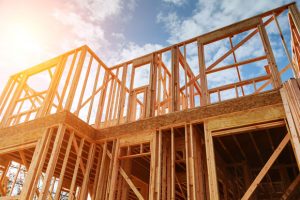Construction MMI: Architecture Billings Index remains near record high, construction spending rises in June
The Construction Monthly Metals Index (MMI) rose by 8.9% for this month’s MMI reading, as June construction spending rose slightly from the previous month.
Each month, MetalMiner hosts a webinar on a specific metals topic. Explore the upcoming webinars and sign up for each on the MetalMiner Events page.
Construction spending ticks up in June
June construction spending in the U.S. reached a seasonally adjusted annual rate of $1,552.2 billion, the Census Bureau reported.
The June rate marked a 0.1% increase from May. In addition, the June rate increased by 8.2% from the June 2020 estimate.
Meanwhile, through the first six months of the year, construction spending totaled $736.5 billion. The half-year totaled marked a jump of 5.4% from the first half of 2020.
Private construction spending reached a seasonally adjusted annual rate of $1,215.2 billion, or up 0.4% from May. Within private construction, residential construction reached a rate of $763.4 billion in June, or up 1.1%. Nonresidential construction reached a rate of $451.8 billion in June, or down 0.7%.
Meanwhile, public construction spending reached a rate of $337.0 billion, or down 1.2%. Educational construction fell 0.8% to a rate of $81.3 billion. Highway construction fell 5.3% to $92.4 billion.
ABI remains near record high
The Architecture Billings Index, released monthly by the American Institute of Architects, once again continued its strong run in June.
The June ABI checked in at 57.1 (anything greater than 50 indicates billings growth). However, its growth slowed compared with the May ABI, which checked in at 58.5. The ABI reached positive territory in February for the first time in a year and has showed growth in every month since then.
The Design Contracts Index reached 58.9 in June, down from 63.2 in May.
“While slightly fewer firms reported an increase in firm billings in June than in May, the current pace of billings growth remains near the highest levels ever seen in the history of the index,” the ABI report stated. “In addition, inquiries surged to a new all-time high score of 71.8, and the value of new design contracts remained very high as well, with a score of 58.9. In addition, firms reported their highest backlogs in two years, with an average of 6.5 months.”
Meanwhile, by region, the Midwest led the way with an ABI reading of 62.0. Trailing the Midwest were the West (59.7), South (57.3) and Northeast (53.2).
This month’s ABI report survey asked architecture firms about difficulties they’ve had filling open positions. According to the report, 59% indicated they have had difficulties filling open positions. Of large firms with annual billings of $5 million or more, the number rose to 80%.
Only 12% of responding firms indicated they have not had problems filling open positions. Meanwhile, 27% indicated they did not have open positions to fill.
Lagging construction employment
Like other sectors, construction firms are indicating difficulties in hiring.
According to the Associated General Contractors of America (AGCA), construction employment in 101 metro areas either declined or stagnated between February 2020 and June 2021 (even as construction spending overall rose in June).
“Typically, construction employment increases between February and June in all but 30 metro areas,” said Ken Simonson, the association’s chief economist. “The fact that more than three times as many metros as usual failed to add construction jobs, despite a hot housing market, is an indication of the continuing impact of the pandemic on both demand for nonresidential projects and the supply of workers.”
The Bureau of Labor Statistics last month reported nonfarm payroll employment rose by 850,000 in June. However, construction employment fell by 7,000 in June. Construction employment remains down by 238,000 jobs compared with pre-pandemic levels (February 2020).
Actual metals prices and trends
The Chinese rebar price rose by 9.7% month over month to $835.78 per metric ton as of Aug. 1. Meanwhile, the Chinese H-beam steel price rose by 9.2% to $857.45 per metric ton.
The U.S. shredded scrap steel price ticked up 0.4% to $505 per short ton.
The European commercial 1050 aluminum sheet price rose by 4.1% to $3,798 per metric ton.
We know what you should be paying for metals. MetalMiner should-cost models are the ultimate savings hack by showing you the “should-cost” price for gauge, width, polish and finish adders. Explore what value they can add for your organization.




Leave a Reply